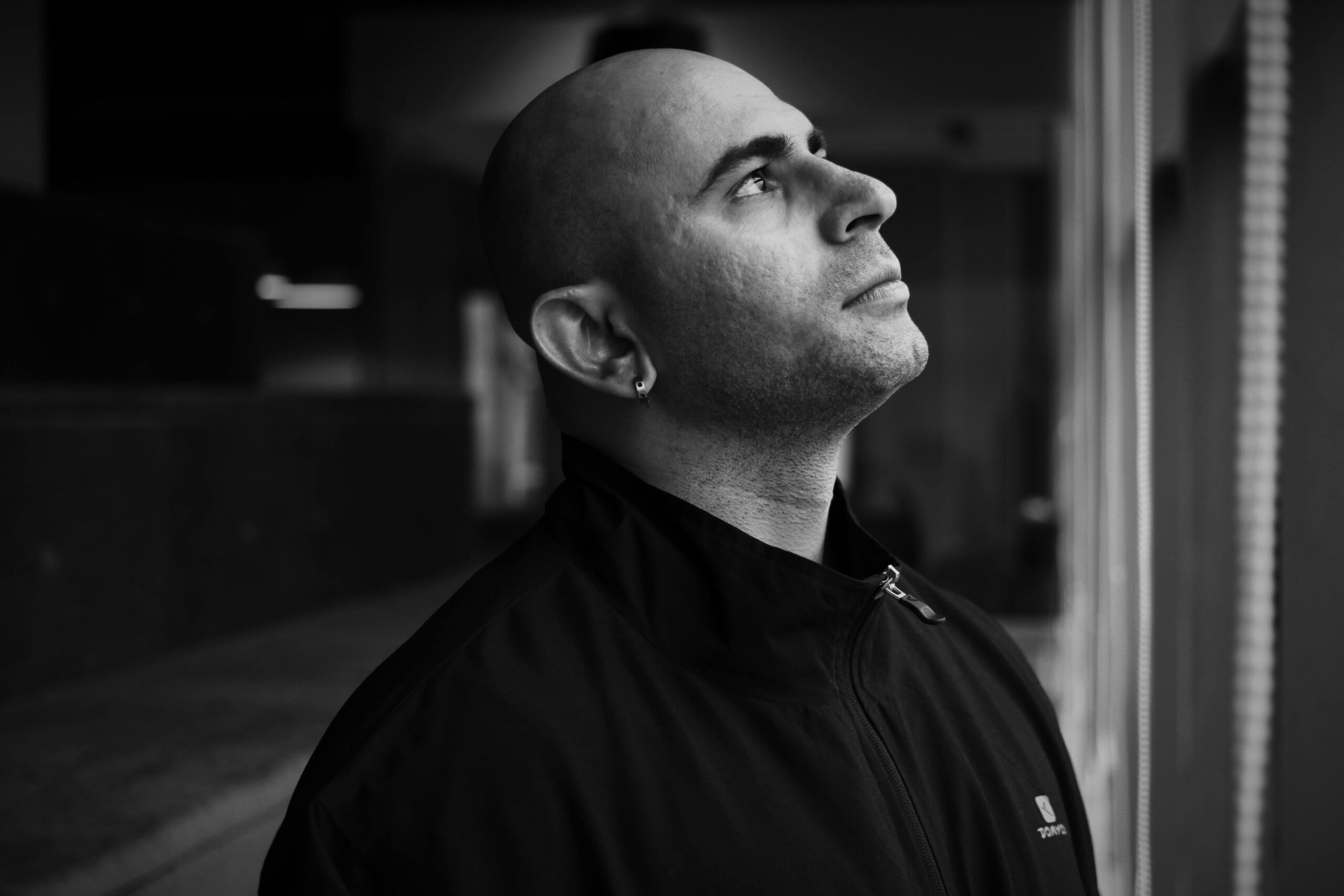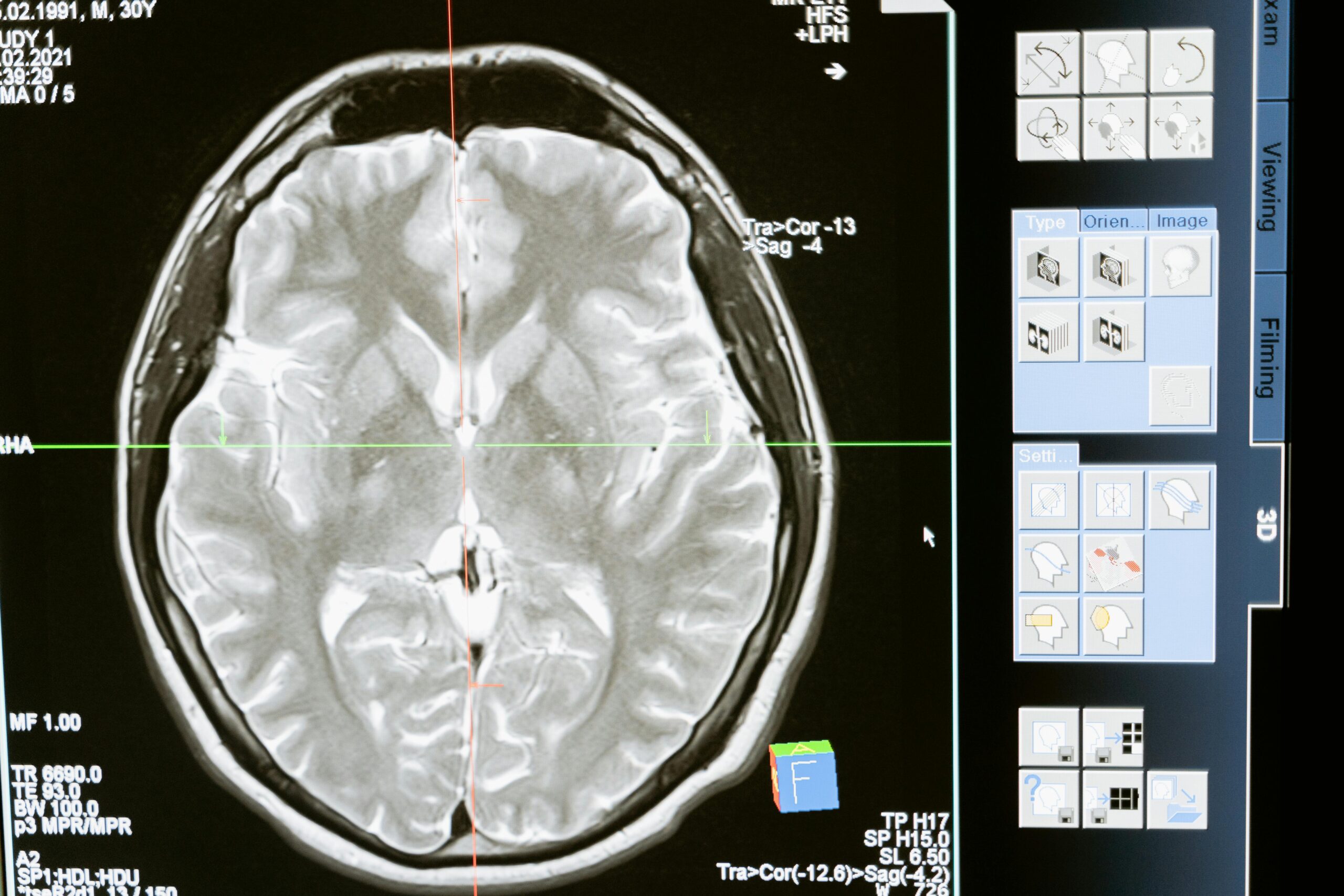
Vestibular Hypofunction: Feeling unsteady, motion‑sensitive, or like your world subtly lags behind your body is exhausting—and isolating. If you’ve been told you have vestibular hypofunction, you may still be searching for a plan that makes your day feel stable again. At Lavender Family Chiropractic in Sarasota, Florida, we focus on the root cause of balance problems through upper cervical chiropractic—gentle, precise corrections of the atlas (C1) and axis (C2) that help restore normal communication between your brain, inner ears, eyes, and posture. With 3D CBCT imaging and functional nervous system scans (Tytron), we map your unique anatomy, identify subtle misalignments, and craft a personalized plan aimed at lasting relief.
This in‑depth guide explains what vestibular hypofunction is, why it overlaps with dizziness, vertigo, BPPV, MdDS, PPPD, and vestibular migraine, and how our upper cervical approach can help you feel steady again—without popping, twisting, or cracking the neck.
What Is Vestibular Hypofunction?
Your vestibular system sits inside the inner ear and acts like your body’s balance GPS. Tiny sensors in the semicircular canals and otolith organs detect head motion and position, sending that data to the brainstem and cerebellum, which coordinate eye movements and posture through reflexes like the vestibulo‑ocular reflex (VOR). When this system is underperforming—on one side (unilateral vestibular hypofunction) or both (bilateral vestibular hypofunction)—the signals your brain receives become incomplete, delayed, or mismatched. The result: dizziness, instability, visual blurring with movement (oscillopsia), and difficulty trusting your body in space.
Vestibular hypofunction isn’t always dramatic. Many patients describe a chronic, low‑grade sense of imbalance that flares with certain positions, screens, supermarkets, fast head turns, or riding in a car. Others experience pronounced spinning, rocking, or floating sensations after an illness, injury, or period of stress.
How Vestibular Hypofunction Feels in Real Life
- Dizziness or lightheadedness that worsens with head motion
- Imbalance—especially in the dark, on uneven surfaces, or in busy visual environments
- Motion sensitivity (cars, boats, escalators, scrolling on a phone)
- Visual discomfort—words seem to bounce when you walk; difficulty tracking targets
- Nausea with quick turns or rolling in bed
- Fatigue and brain fog from constantly stabilizing yourself
- Anxiety stemming from unpredictable episodes
These symptoms can appear after viral illness, concussion, whiplash, barometric pressure shifts, prolonged travel, or seemingly “out of the blue.”
Where It Overlaps: Vertigo, BPPV, MdDS, PPPD, and Vestibular Migraine
Vestibular hypofunction often coexists with or is misidentified as other vestibular conditions. Understanding the relationships helps you choose the right care plan.
Vertigo
Vertigo is the illusion of spinning or rotation. Hypofunction can set the stage by degrading balance input, so the brain over‑relies on vision and neck sensation. That mismatch can trigger spinning, nausea, and the urge to grab a wall.
BPPV (Benign Paroxysmal Positional Vertigo)
BPPV occurs when tiny otoconia (ear crystals) drift into the semicircular canals, creating brief, intense spins with specific positions (rolling over, looking up). While BPPV is a mechanical inner‑ear issue addressed by repositioning maneuvers, neck alignment and head posture strongly influence how your vestibular system recalibrates afterward. An upper cervical misalignment can perpetuate residual dizziness or cause frequent recurrences.
MdDS (Mal de Débarquement Syndrome)
MdDS feels like constant rocking or swaying—often after a cruise, flight, or long car ride—yet can persist long after motion stops. Many MdDS patients also have neck stiffness or a history of whiplash. Poor upper cervical mechanics may keep the brainstem and postural networks in a “sea legs” pattern, making normal ground feel unstable.
PPPD (Persistent Postural‑Perceptual Dizziness)
PPPD creates a steady sense of unsteadiness aggravated by complex visual scenes (grocery aisles, busy streets) and upright posture. It often begins after a vertigo event, concussion, or period of stress. When the brainstem remains sensitized—especially if the atlas/axis are misaligned—PPPD can linger even after the initial trigger resolves.
Vestibular Migraine
Migraines aren’t just headaches; they’re episodes of heightened brain sensitivity. Vestibular migraine can present with dizziness, visual motion sensitivity, pressure, or aura—sometimes without head pain. The upper neck’s role in blood flow regulation, cervical proprioception, and brainstem modulation makes alignment especially important for people with vestibular migraine.
Why Vestibular Problems Often Get Missed
Vestibular disorders live at the intersection of ENT, neurology, physical therapy, and chiropractic—which means patients can bounce among providers without anyone integrating the full picture. Imaging may look “normal,” hearing may be fine, and standard balance tests might not capture the subtle head‑neck‑eye interplay. Meanwhile, day‑to‑day life remains wobbly.
At Lavender Family Chiropractic, we focus on the upper cervical spine—the bridge between the brain and body where vestibular, visual, and proprioceptive information meet. Misalignments here don’t always cause pain, but they can quietly distort how your balance system works.
The Upper Cervical Connection: Your Neck as a Balance Hub
The atlas (C1) and axis (C2) cradle the brainstem and host dense clusters of position sensors (proprioceptors). When these bones shift, even a few millimeters, they can:
- Irritate the brainstem and vestibular nuclei
- Disrupt cervical proprioception, confusing the brain about head position
- Alter blood and cerebrospinal fluid (CSF) dynamics, affecting pressure and perfusion
- Change head posture, influencing how the eyes and inner ears coordinate
- Increase muscle guarding, which amplifies sensory noise to the brain
Think of the upper cervical spine as the gimbal that keeps a camera steady. If the gimbal is off, the camera (your brain/eyes) has to over‑correct constantly. That’s tiring—and dizzying.
How Upper Cervical Care Helps People with Vestibular Hypofunction
Upper cervical chiropractic is a specialized, gentle approach that uses precise imaging to analyze your unique alignment. Our goal is to restore mechanical neutrality at the top of the spine so the brainstem, eyes, and inner ears can re‑synchronize. Benefits our patients commonly report include:
- Fewer and milder dizziness episodes
- Improved steadiness and confidence walking
- Less visual motion sensitivity and “bounce” while moving
- Reduced headaches, neck tension, and jaw clenching
- Better sleep and energy from calmer autonomic tone
We don’t twist, crack, or pop the neck. Adjustments are light, targeted, and guided by data.
Our Technology: 3D CBCT + Tytron Nervous System Scan
- 3D CBCT (Cone Beam CT): Provides a three‑dimensional view of your upper neck, skull base, and jaw relationships. We measure exact misalignments that standard X‑rays can miss, guiding an individualized correction plan.
- Tytron Functional Nervous System Scan: Infrared thermography maps temperature asymmetries along the spine, which correlate with autonomic nervous system imbalance. We use these scans to track how your nervous system calms as alignment stabilizes.
Together, these tools remove guesswork and help us deliver precise, repeatable corrections.
Your First Visit: What to Expect
- Conversation & History: We listen—when your symptoms started, what triggers them, what you’ve tried, and what “better” would look like. Many people arrive after seeing ENTs, neurologists, vestibular therapists, or other chiropractors. Your story guides our testing.
- Objective Testing: Posture photos, balance and coordination checks, eye tracking screens, cervical range of motion, and the Tytron scan. If appropriate, we’ll recommend 3D CBCT imaging for precise atlas/axis analysis.
- Report of Findings: We explain your results in plain English, show your images, and outline a phased plan with expected checkpoints. Transparency builds trust—and results.
The Lavender Method: Gentle, Data‑Driven, and Individualized
- Specific Corrections: Using your CBCT vectors, we deliver a light, exact adjustment of the atlas/axis—no twisting, cracking, or popping.
- Post‑Adjustment Rest: After the correction, you’ll rest so muscles, ligaments, and the nervous system can settle into the new alignment.
- Stabilization Phase: As you hold the correction longer between visits, we space out appointments and add simple home strategies (sleep posture, head support, breathing drills). If you’re in vestibular rehab, we coordinate with your therapist so your exercises reinforce—not fight—your new alignment.
- Re‑Testing: Periodic Tytron scans and functional checks confirm that your nervous system is calmer, your posture is more symmetrical, and your balance mechanics are improving.
Our care integrates beautifully with ENT evaluations, neurologic care, and vestibular therapy. The difference is that we start at the top—where the systems converge.
Timelines: What “Proven Results” Looks Like in Practice
Every person heals at their own pace, but patterns emerge:
- Weeks 1–3: Many patients notice steadier gait, fewer “zingers,” and reduced neck tightness. Sleep may improve as the autonomic system calms.
- Weeks 4–8: Visual motion sensitivity declines; grocery stores and screens feel less provocative. Headaches/vestibular migraines become less frequent or intense.
- Months 3–6: Longer stretches with no dizziness, better tolerance for travel, workouts, and busy environments. People resume driving, working, and socializing with confidence.
We consider it a win when you hold your correction longer, need fewer adjustments, and feel like your mornings are predictable again.
Who We Help Most Often
- People with chronic dizziness that outlasted initial BPPV episodes
- MdDS‑like rocking after a cruise or flight
- PPPD with visual overwhelm and upright intolerance
- Vestibular migraine with or without headache
- Post‑concussion or whiplash history, especially with neck stiffness
- Those who tried standard chiropractic but dislike or didn’t respond to forceful manipulation
If you have red‑flag symptoms—sudden severe headache, stroke signs, acute hearing loss, or new neurologic deficits—seek emergency medical care first. We routinely co‑manage and will be here when you’re medically stable.
Why Upper Cervical Care + Vestibular Therapy Can Be Powerful Together
Vestibular rehab retrains the brain with graded exposure and head‑eye exercises. Upper cervical care optimizes the hardware—the head‑neck alignment and brainstem environment—so the rehab’s software changes “stick.” Many of our patients feel that once their neck is corrected, vestibular exercises finally work as intended.
Lifestyle Support That Reinforces Your Gains
- Sleep posture: Neutral neck with adequate pillow height; avoid stomach sleeping
- Micro‑breaks: Gentle chin nods and shoulder blade slides during desk work
- Visual hygiene: 20‑20‑20 rule with screens; reduce rapid scrolling early in care
- Hydration & minerals: Support autonomic balance; many feel better with consistent water intake and electrolyte‑rich foods
- Breathing & relaxation: Nasal breathing and 5‑minute down‑shift routines (box breathing, quiet walks) to tone the vagus nerve
These small habits make it easier for your body to hold the new alignment and keep dizziness at bay.
Why Choose Lavender Family Chiropractic (Sarasota, Bradenton, Lakewood Ranch)
- Upper cervical specialists: This is all we do—day in, day out.
- Three‑doctor team: Dr. Rusty Lavender, Dr. Jacob Temple, and Dr. Will Guzinski
- Advanced diagnostics: 3D CBCT & Tytron to guide and verify care
- Gentle, precise adjustments: No twisting, cracking, or popping
- Local trust: 120+ five‑star reviews from people across Sarasota and Manatee counties
- Collaborative mindset: We happily co‑manage with ENTs, neurologists, primary care, and vestibular therapists
Our mission is simple: give you your life back—steady, confident, and present.
Patient Success Snapshots
“The Boat Finally Stopped.” After a Gulf cruise, a Lakewood Ranch patient felt continuous rocking for six months. ENT and vestibular therapy helped a little, but walking in grocery aisles remained brutal. Her CBCT showed a right‑sided atlas misalignment. After three gentle corrections and posture coaching, she reported her first “still” week—and then two—since the trip.
“Grocery Stores Don’t Scare Me Anymore.” A Sarasota teacher with PPPD avoided big box stores for a year. Within eight weeks of upper cervical care plus coordinated vestibular rehab, she returned to weekend errands without panic or nausea.
“No More Post‑Drive Spins.” A Bradenton contractor had dizziness every evening after long truck days. Aligning C1/C2 and changing headrest position eliminated the nightly spins and neck ache.
Individual results vary; these stories illustrate common patterns we see when the upper cervical spine is corrected and stabilized.
Top 15 FAQs About Vestibular Hypofunction & Upper Cervical Chiropractic
1) What exactly is vestibular hypofunction?
It’s reduced performance of the inner‑ear balance system—on one side or both—leading to dizziness, instability, and visual motion sensitivity.
2) How is this different from BPPV?
BPPV is a mechanical crystal issue producing brief positional spins. Hypofunction is broader under‑performance. They can co‑occur, and lingering symptoms after BPPV often point to upper cervical involvement.
3) Can upper cervical misalignment really affect dizziness?
Yes. The atlas/axis influence brainstem function, cervical proprioception, blood/CSF flow, and head posture—all crucial for balance.
4) What makes your approach different from traditional chiropractic?
We use 3D CBCT to calculate a personalized correction and adjust gently without twisting or cracking. It’s precise, repeatable, and comfortable.
5) How soon will I feel better?
Some feel lighter or steadier after the first correction; others improve steadily over several weeks. Consistency and “holding” the adjustment are key.
6) Do you work with vestibular therapists or ENTs?
Absolutely. Many patients do best with a collaborative plan. We share findings and align strategies so your progress compounds.
7) Is upper cervical care safe for seniors or kids?
Yes. Our gentle methods are appropriate across the lifespan and are tailored to bone density, ligament laxity, and health history.
8) What if my MRI and ENT tests were normal?
That’s common. Standard scans look for disease, not small structural misalignments. CBCT shows a different layer of information—your mechanics.
9) Will I need ongoing care forever?
Our goal is stability. As you hold alignment longer, we stretch out visits. Many transition to occasional wellness checks to keep things steady.
10) Do you accept insurance?
Our office is out of network with insurance. Many of our patients receive a superbill to submit to their insurance for reimbursement based on their coverage. We offer many different payment options as well as finance options.
11) Can this help vestibular migraine?
Many migraine patients report fewer and milder episodes as the upper neck stabilizes and autonomic tone calms, especially alongside sleep and nutrition support.
12) What if I’ve already tried everything?
We see you. A precise atlas correction is often the missing piece—especially when symptoms persist after BPPV, concussion, or “normal” tests.
13) Do you crack the neck?
No. Corrections are gentle, targeted, and guided by your imaging.
14) How long is the first visit?
Plan for 60–90 minutes including consultation, Tytron scan, any recommended CBCT, and your first correction if appropriate.
15) What areas do you serve?
Sarasota, Bradenton, Lakewood Ranch, Parrish, Ellenton, Venice, Osprey, Punta Gorda, St. Petersburg, Siesta Key, Longboat Key, Lido Key, and Myakka City.
SEO Corner: How People Find Us (and How We Can Help You Faster)
Many patients arrive after searching “chiropractor near me,” “upper cervical chiropractor near me,” “Vertigo doctor near me,” “Migraine doctor near me,” or “chiropractor Sarasota Florida.” If that’s you, welcome—you’re in the right place. By focusing on upper cervical chiropractic, we help people with vertigo, migraines, BPPV, PPPD, MdDS, post‑concussion symptoms, occipital neuralgia, trigeminal neuralgia, neck straightening (hypolordosis), and more. If your world has been spinning, we’d love to help it stand still again.
Your Next Step Toward Steady
If dizziness or imbalance is limiting your life, you deserve a plan that looks beyond temporary symptom relief. Correcting the upper cervical spine can unlock the brain’s natural ability to re‑coordinate balance, vision, and posture. You don’t have to keep guessing what will help—you can measure it, correct it, and feel it.
Lavender Family Chiropractic in Sarasota Florida offers complimentary consultations to learn more about you. Click the link below!
https://intake.chirohd.com/new-patient-scheduling/724/lavender-family-chiropractic
Visit our Website!
To learn more about us go to http://www.chiropractorsarasotaflorida.com
We also service Bradenton, Parrish, Ellenton, Ruskin, Venice, Tampa, St. Pete, Osprey, Longboat, Lakewood Ranch, Myakka City.
If you are in Tampa, Fort Myers, or Salt Lake City, you can visit my other locations! NeckWise Upper Cervical. Visit, www.neckwise.com
If you are not local, visit www.uccnearme.com to find a doctor in your area.
Lavender Family Chiropractic
5899 Whitfield Ave Ste 107, Sarasota, FL 34243
Call: (941) 243‑3729
Website: www.chiropractorsarasotaflorida.com
Instagram: @lavenderfamilysrq
TikTok: @drrustylavender
Booking your first visit is the quickest way to discover whether an atlas correction can help your dizziness, vertigo, or vestibular migraine. Our team—Dr. Rusty Lavender, Dr. Jacob Temple, and Dr. Will Guzinski—is ready to listen, test, and guide you with a calm, step‑by‑step plan.
For Our Neighbors Across the Suncoast
We proudly care for families from Sarasota, Bradenton, Lakewood Ranch, Parrish, Ellenton, Venice, Osprey, Punta Gorda, St. Petersburg, Siesta Key, Longboat Key, Lido Key, and Myakka City. Whether you’re searching for a chiropractor Sarasota Florida, a Vertigo doctor near me, or the best upper cervical chiropractor near me, you’ll find precise, compassionate care right here.
Closing Thought: Hope Is a Plan with Steps
Hope isn’t wishful thinking—it’s a plan with steps you can follow and milestones you can feel. If you’re living with vestibular hypofunction, there is a path forward. Image the neck, correct the misalignment, calm the nervous system, and let your balance rebuild. That’s what we do every day at Lavender Family Chiropractic. We can’t wait to help you feel steady again.




